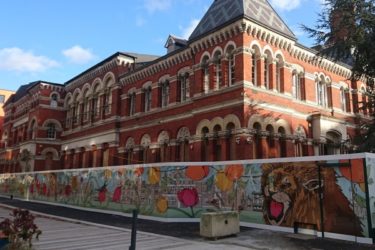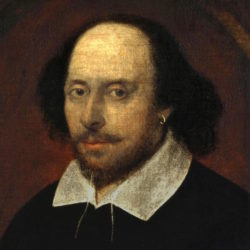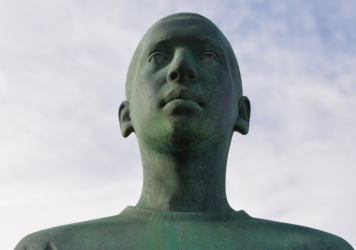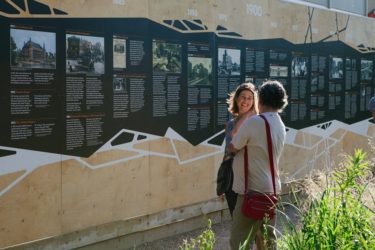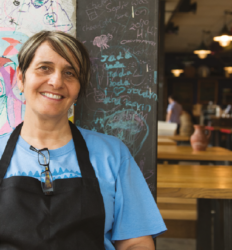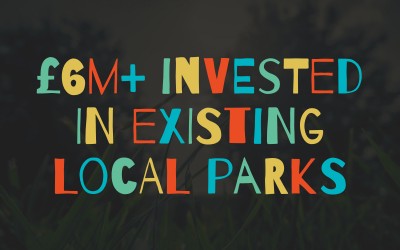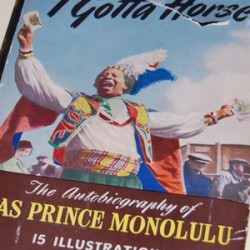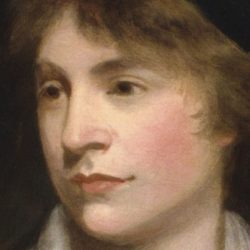Southwark’s great novelist, Charles Dickens famously began A Tale of Two Cities with the line “It was the best of times, it was the worst of times.”
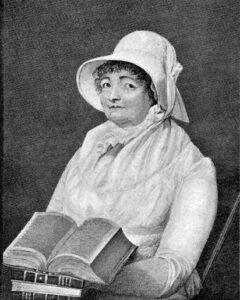
He went on to write “Spiritual revelations were conceded to England at that favoured period, as at this. Mrs. Southcott had recently attained her five-and-twentieth blessed birthday.”
Published in 1859, the book is set many years earlier. It begins in 1775 and covers the turbulent years of the French revolution. Nonetheless, Dickens had no doubt that his contemporary readers would still recognise this nod to the long-since deceased Joanna Southcott such was her fame.
The reference chimes neatly with the novel’s themes of resurrection and rebirth, for Joanna Southcott was a self-proclaimed prophet who foretold the return of the Messiah.
Born in Devon in 1750, Southcott grew-up during the peak of the Enlightenment. It was the age of reason and a time of political and scientific revolution. Indeed, two world-changing scientists – Michael Faraday and Charles Babbage – emerged from Elephant and Castle, alone, during this period.
However, it was also a time of devout religious faith; upheaval in the Church of England; spiritual fervour and Millennialism (a belief that the end of the world is imminent).
Southcott, had an unremarkable, rural childhood and had worked as a domestic servant as a young woman in Devon. However, by the time she arrived in London, in 1802, she was a famous preacher with thousands of followers hanging on her every word.
In her early forties, Southcott had moved from a small village to the town of Exeter where she joined the Wesleyan church. This was a branch of the modest but rapidly growing Methodist movement, which would soon split from the Church of England.
At the age of 64, she announced she was pregnant with the Messiah
According to Southcott, it was in Exeter that the ‘divine Spirit’ first visited her. The Spirit imparted prophecies to Joanna and told her to write them down and share for the good of all humanity.
Around this time she began to identify herself with the “woman clothed with the sun” as described in the Book of Revelation and devoted her time to interpreting what the Bible foretold about the End of Days.
The visits and visions continued and Joanna continued to transcribe the prophecies; publishing these divine messages alongside her own writing and proselytising to anyone who would listen.
Some of her predictions (such as the death of the Bishop of Exeter and local crop failures) seemed to come true and she soon acquired a small but faithful band of followers.
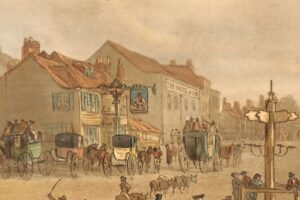
However, many of her other prophecies were sealed unread and held in secret. Her intention was that they should only be revealed near or after the date of the events foretold.
By 1801, several influential men from the church and from industry, including the engraver, William Sharp, visited Southcott in Exeter. These men would become her inner circle of supporters and patrons, dubbed ‘the Seven Stars’ in what would become known as the Southcottian movement.
These supporters would help to spread her message throughout the country, and William Sharp would help to publish and distribute pamphlets and books on Southcott’s behalf. It was Sharp who first brought Southcott to London and it was here that she met Elias Carpenter.
Carpenter was a non-conformist, lay preacher with a meeting-house in Kennington Road and already an avid admirer of Southcott.
By trade, Carpenter was a papermaker and ran the Neckinger Mills in Bermondsey. The mill was one of the largest of its kind in Britain and the first to recycle paper. The site would later become a tannery and eventually, Bevington’s Leather.
Southcott may have worked with Carpenter at the mill for a time. In any case the pair established a good relationship and, in 1804, he invited her to use his Neckinger house for a public “trial” to vindicate her writings. The idea was to examine and test her theology and demonstrate that it could withstand public scrutiny.
Many of her prophecies were sealed and secret
The following year, he gave Southcott her own chapel, in which she could preach to the community. The chapel was in Elephant and Castle and Carpenter named it the House of God.
By this time, Southcott had already undertaken missionary tours around the country and was attracting ever-larger crowds at public appearances. She was widely published and she was also making money by selling ‘Seals of the Lord’, sealed paper notes that she claimed would guarantee the purchasers eternal life in heaven.
In total, Southcott is believed to have published at least 65 books and sold around 14,000 seals.
In the early 1800s, it was unusual for an uneducated and unmarried woman to be able to support herself financially and to live independently, and there was something of a feminist seam that ran throughout her teachings.
Southcott’s independence and resourcefulness only added to her mystique amongst her followers but her unconventional way of life, her prophecies and her unorthodox ideas, also made her a target for satirical cartoons and ridicule.
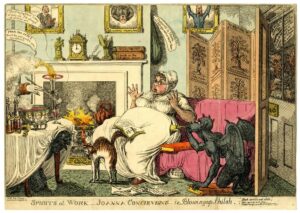
Carpenter established the House of God chapel for Southcott at Newington Butts in 1805. It was next-door to the Elephant and Castle inn (the pub which has since given the area its name) in what was probably an old warehouse or workshop.
However, soon after he’d presented his heroine with her own church, the pair fell out and another of Southcott’s disciples, William Tozer arranged an alternative nearby at Duke Street (close to the where the obelisk stands at St George’s Circus). Carpenter continued to run the House of God at the Elephant junction for several more years, before moving it half a mile down Walworth Road to Amelia Street.
Perhaps the most famous moment in Southcott’s life came towards the end. At the age of 64, she announced she was pregnant and that she would give birth to the new Messiah at her home in Marylebone.
Although the claim was greeted with incredulity in many quarters, at least one physician (among several who examined her) confirmed the pregnancy.
The birth was waited upon, excitedly, by her multitude of followers and gifts poured in to provide the holy child with every possible comfort. These included a gilt crib said to have cost £200 (more than £14k in today’s money).
The woman clothed with the sun
The baby was due in October 1814 but the anointed day came and went without any birth and Southcott died in December that same year.
Whether the pregnancy had been a deliberate deception or not isn’t clear. It may have been fraudulent or she may genuinely have experienced some kind of phantom pregnancy which, given her theology, she construed as heralding the second coming of Christ.
Southcott’s legacy was to live on long after her death, as generations of Southcottians continued to honour her memory, publicise her beliefs and study her work.
This continued well into the twentieth century, most famously through an organisation called the Panacea Society.
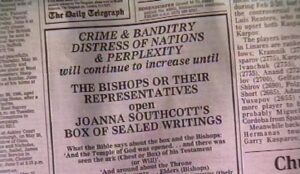
One aspect, in particular, continues to intrigue the public to this day. It concerns a sealed box of prophecies that Southcott stipulated was only to be opened in a time of national crisis and only in the presence of 24 bishops (albeit ahead of Judgement Day which Southcottians had slated for 2004).
Whatever happened to the box and whatever it might contain has been subject to endless speculation ever since. The ‘psychic researcher’, Harry Price claimed to have x-rayed it in 1927; some people swear it was opened long ago but contained nothing of interest while others say it has long since been lost.
Lost or not, it still turns-up occasionally in popular culture, alluded to in the TV series Monty Python and more recently in the novel and TV series Good Omens.
However, according to the Panacea Society, at least, the box remains intact and is held at its former headquarters, now a museum, in Bedford.
